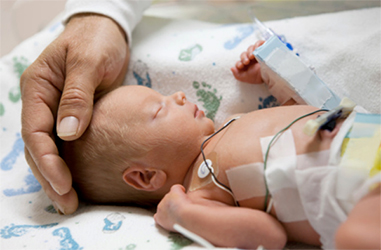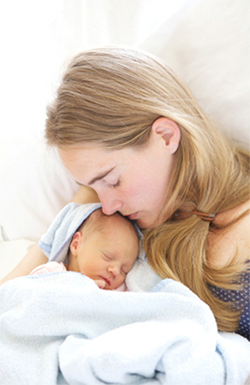The aim of this NINDS funded trial is to assess whether multiple high doses of Epo during the first week of age will reduce the rate of death or moderate/severe motor and cognitive impairment in infants born with HIE. 500 term and near-term infants with HIE will be enrolled at over 15 centers across the U.S. Infants will be assessed at 2 years of age to see whether Epo treatment improved neurodevelopmental outcomes.
Principal Investigators, Clinical Coordinating Center: Yvonne Wu, MD MPH and Sandra Juul, MD, PhD
Principal Investigator, Data Coordinating Center: Patrick Heagerty, PhD
Funding: NINDS 1U01NS092764 and U01 NS092553
ClinicalTrials.gov Identifier: NCT# 02811263



Hypoxic-ischemic encephalopathy (HIE) occurs when a baby experiences reduced blood flow and oxygen delivery to the brain near the time of birth. HIE is also referred to as neonatal encephalopathy, or birth asphyxia. When the amount of blood and oxygen supplied to the brain is less than normal, there is a possibility that the baby may sustain injury to the brain. Not all newborn babies suffer brain damage under these circumstances. However, if brain injury occurs, there is a high risk for death or neurologic disabilities including cerebral palsy, cognitive impairment (mental retardation), epilepsy, and visual impairment.
HIE affects 9,000-12,000 newborns each year in the U.S. The standard treatment for HIE is therapeutic hypothermia, or cooling therapy. Cooling the baby's body temperature for 3 days reduces the risk of brain injury after HIE. However, cooling therapy only helps about 1 in 7 infants with HIE. Therefore, additional treatments are needed to further improve brain function and brain recovery after HIE.
| Protective | Growth Factor |
|---|---|
| ↓Neuronal apoptosis | ↑Brain derived neurotrophic factor (BDNF) |
| ↓Oligodendrocyte injury | ↑Neurogenesis |
| ↓Inflammation | ↑Oligodendrogenesis |
| ↓Oxidative Injury | ↑Oligodendrocyte maturation |
| ↓Nitric oxide toxicity | ↑Angiogenesis |
| ↓Glutamate toxicity | |
| ↓Iron utilization |
In adults with kidney failure, longterm Epo treatment has been associated with the following side effects. These risks have NOT been associated with Epo treatment in newborns.

We hypothesize that high-dose Epo given to cooled infants with moderate/severe HIE will reduce the primary outcome of death or neurodevelopmental impairment at age 24 months from 49% to 33%. We further hypothesize that neonatal Epo will be safe, will decrease brain injury severity on neonatal MRI, and will decrease serial inflammatory cytokines and biomarkers of brain injury.
Primary outcome is the composite of death or moderate/severe neurodevelopmental impairment. Moderate/severe neurodevelopmental impairment is based on standardized testing of motor and cognitive abilities at 2 years of age. Impairment is defined as any of the following:
Secondary outcomes at 2 years of age include presence of cerebral palsy, severity of motor impairment, Bayley III cognitive and language scores, epilepsy, and behavioral abnormalities (e.g., attention problems or aggressive behavior).
Multi-Principal Investigators
Yvonne Wu, MD MPH, University of California, San Francisco, San Francisco, CA
Sandra Juul, MD PhD, University of Washington, Seattle, WA
Email: HEALtrial@uw.edu
Project Director
Amy Goodman, PhD, University of California, San Francisco, San Francisco, CA
amy.goodman@ucsf.edu
Lead Central Clinical Coordinator
John Feltner, University of Washington, Seattle, WA
jfeltner@uw.edu
Principal Investigator
Patrick Heagerty, Ph.D.
Biostatistician
Bryan Comstock, MS